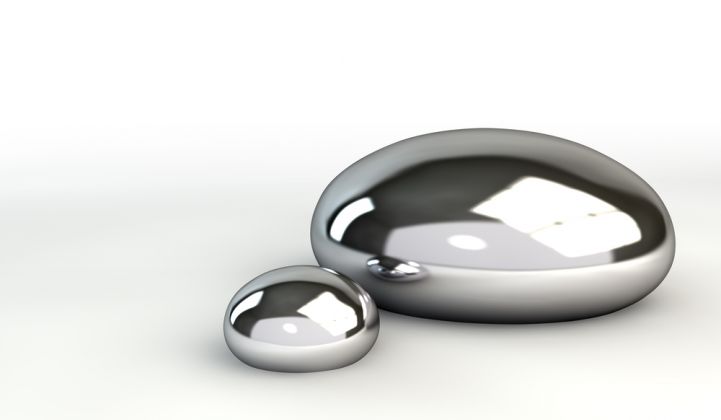Ambri, with its liquid metal battery technology, has returned to the energy storage race after "a pause" during which it redesigned its high-temperature seals and worked on other facets of its storage system.
Getting an entirely new and novel battery chemistry to commercial scale is Sisyphean work. About a year ago, the firm had to lay off approximately 25 percent of its staff because the startup had "not made the technology progress [it] had anticipated." The CEO said at the time, "Bringing new scientific discoveries in the physical sciences to commercial success is hard; the process is not entirely knowable or amenable to predictable timelines." Ambri had been working on prototype storage systems with project partners such as Hawaiian Electric and Con Edison.
The now 37-employee company just announced that it's still going after the potentially immense stationary energy storage market, but with an improved version of its unique battery.
Ambri's technology is based on the research of Donald Sadoway, MIT professor of materials chemistry, and inspired by the economies of scale facilitated by modern electrometallurgy and the aluminum smelter. The big-battery startup has raised more than $50 million in venture capital from investors KLP Enterprises, the family office of Karen Pritzker and Michael Vlock, Building Insurance Bern, Khosla Ventures, Bill Gates and French energy giant Total.
Over the last year, the firm kept busy redesigning high-temperature seals and developing its battery management system and heater control. Ambri has been testing a "fully functioning in-lab" energy storage system, which provides 20 kilowatt-hours of energy storage with a peak capacity of 6 kilowatts.
A spokesperson for the company said, "We will be building a commercial Ambri system in our lab next year which will be more than 500 kilowatt-hours in capacity. We will deploy our first systems of this size with customers in 2018."
Although Ambri claims the battery can be used for frequency regulation, it is a "long-duration" energy storage technology that boasts "no fade rate" on "full depth of discharge cycling over thousands of cycles and years of operation.”
According to the firm, the three battery layers in the Ambri device are self-segregating, cheap to manufacture and earth-abundant. The materials used in the original design were magnesium and antimony separated by a salt, but the Sadoway team has ongoing research on other elemental combinations. It recently demonstrated that calcium can make up parts of the three-part liquid metal battery. An article in Nature suggests that Sadoway has worked with a lithium-antimony-lead materials system, as well.
David Snydacker, a battery scientist at Dosima Research, notes that "Sadoway’s claims of durability obscured a core tenet of battery diligence: Cycle life and calendar life are not the same."
He adds, "When batteries are tested in the lab, they are often cycled 12 times per day. This allows researchers to achieve 1,000 cycles in just a few months. Researchers are often tempted to extrapolate this cycle life to predict a lifespan. For example, if a battery maintains 90 percent of its capacity after 1,000 cycles, then it should maintain 70 percent of its capacity after 3,000 cycles. And if the battery is used just once per day, then 3,000 cycles should last nearly 10 years, right? Wrong."
"When a battery is operated for years, many aging mechanisms appear that may be hidden during first months of testing. All batteries contain reactive materials, which can degrade the battery over time, and this degradation is accelerated by high temperature. Ambri’s very high temperature allows it to use molten electrodes but presents a variety of problems related to calendar life."
Ambri investor Vinod Khosla is not a big fan of lithium-ion batteries and has funded a number of energy storage companies including Pellion, LightSail, QuantumScape and Seeo. There are a number of other companies developing lithium-ion alternatives. Aquion, funded by KPCB, ATV and Foundation Capital, is developing a saltwater electrolyte-based system. Eos has a zinc-air battery with some customer traction. In 2014, Alevo unstealthed with claims of a new sulfur-based inorganic lithium-ion electrolyte chemistry. Stanford University technology can be found in Huggins Group battery startup Alveo Energy. Fluidic Energy is deploying zinc-air batteries.
Dozens more startups are aiming for utility-scale energy storage working with compressed air, mechanical systems, flow batteries, and other electrochemical means. Here's a batch of European energy storage startups.
There is a load of VC investment thinly spread in this field -- and a familiar, dismal reckoning awaits.
In the meantime, Ambri has to work on performance, lifetime, safety and thermal issues while maintaining the liquid state of the metals, and coping with corrosion and the slow pace of new-technology uptake by utilities.
***
Back in 2014 we reported on a presentation given by Ambri's David Bradwell at Infocast's Energy Storage Week. Here it is.
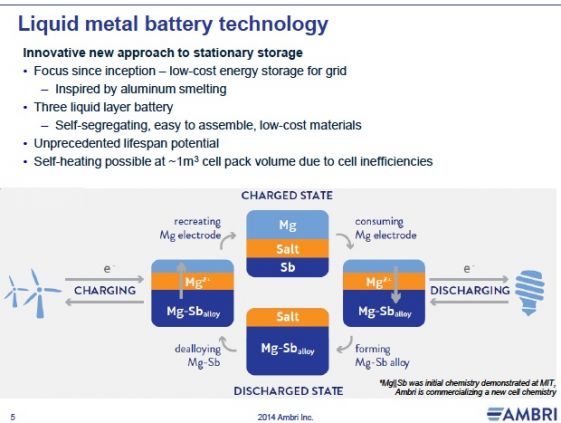
Prototype units started as the "shot glass," followed by the 3-inch, 20-watt-hour "hockey puck," and then by the 6-inch, 200-watt-hour "saucer." The commercialized product will use a 6-inch square.
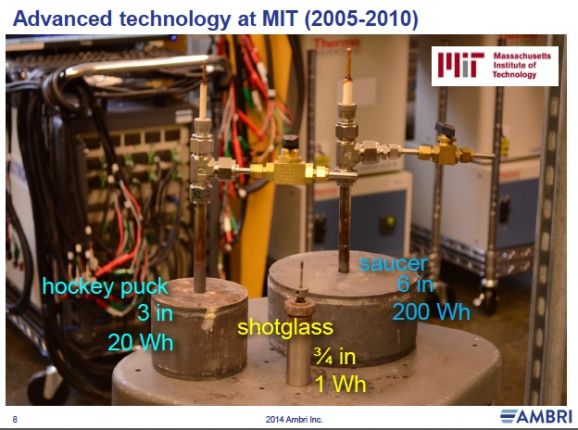
Bradwell notes that the batteries achieve 1,000 cycles of continuous deep cycling with negligible fade. There are no moving parts, pumps or valves in the design.
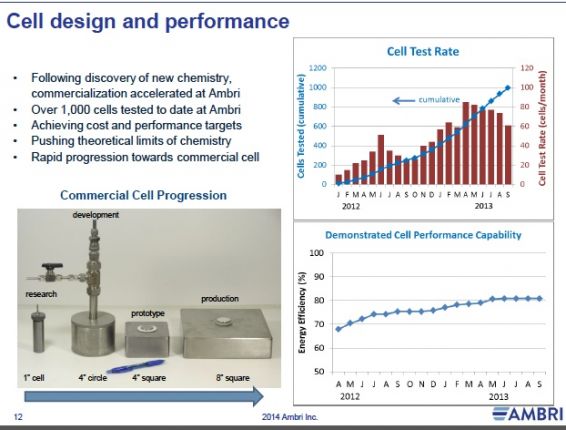
The cell is contained in a 4-inch-by-4-inch stamped stainless steel housing with no nanoscale microstructures or difficult-to-synthesize materials, according to the co-founder.
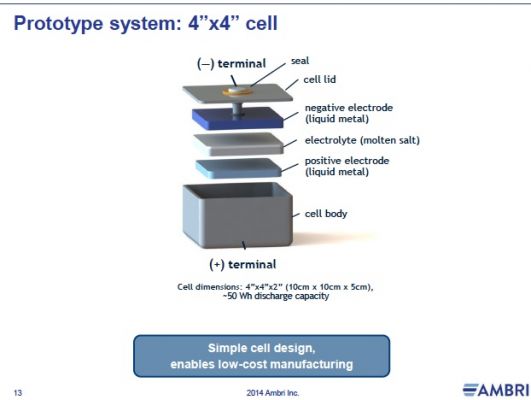
The cells have a DC-to-DC efficiency of 80 percent at a five-hour charge/discharge rate and an AC-to-AC efficiency of 70 percent to 75 percent.
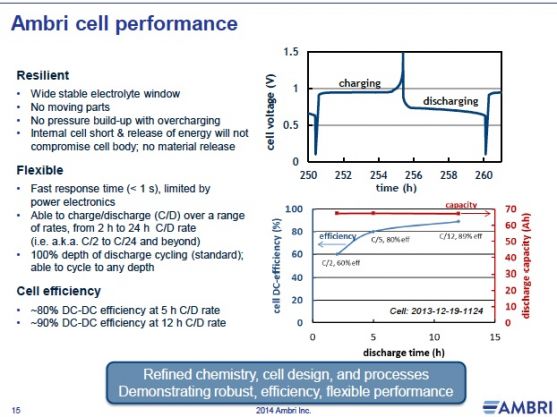

Bradwell noted that all manufacturing processes and robotic cell assembly had to be developed by Ambri. He claims that the technology has a lower manufacturing cost and lower employee-per-square-foot-of-factory ratio than that of lithium-ion battery technology. The CTO also suggested that Ambri's pricing will fall between that of pumped hydro and compressed-air energy storage.
MIT's Don Sadoway on Ambri technology
